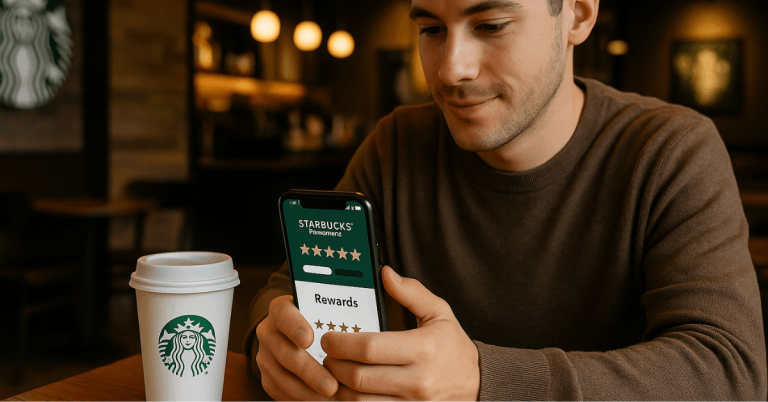If you’re a remote worker who enjoys coffee shops or needs fast internet on the go, locating free Wi-Fi is essential. It’s often difficult, especially in new areas. Fortunately, several methods exist to connect to free Wi-Fi anywhere.
This post will cover various techniques, such as Wi-Fi finder apps, turning your phone into a hotspot, using a portable router, and more, to ensure you always have access to free Wi-Fi.
1. Locate Free Wi-Fi Access Points
On the move? Accessing free Wi-Fi can help you stay connected without costs. Here’s how to find it:
- Chain locations: Many cafes and hotel brands worldwide offer free Wi-Fi to guests. Typically, you’ll encounter a simple sign-in page or occasional advertisements. To maintain privacy and avoid promotional clutter, consider using a secondary email.
- Examples: Apple Store, Macy’s, Best Buy, Target
- Public spaces: Libraries often have free Wi-Fi, along with various communal facilities.
- Examples: Public libraries, metro stations, bus terminals, museums
- City-wide Wi-Fi: Check if your city offers free Wi-Fi in central zones. The local government or tourist site usually lists these areas.
- Examples: Malmö, Sweden; Tel Aviv, Israel; New York City, USA; Bangalore, India
Loyalty Programs Tip: Joining loyalty programs, like Hilton Honors Rewards, can provide Wi-Fi access. This program also offers discounts and a point system, benefiting frequent visitors.
2. Use Your Phone as a Hotspot
You can always turn your phone into a hotspot. This method, known as tethering, can be expensive if you don’t have an unlimited data plan. Check with your carrier about any limitations or extra charges, such as data caps.
Here’s how to set up a mobile hotspot for Android and iPhone:
Android Hotspot Setup
Example Device: Google Pixel 6 Pro
- Step 1: Access settings on your phone.
- Step 2: Select ‘Network and Internet’.
- Step 3: Tap ‘Hotspot and tethering’.
- Step 4: Activate ‘Wi-Fi hotspot’.
- Step 5: On your computer, open Wi-Fi settings and look for available networks. Select the network named ‘Pixel_5279’.
- Step 6: Find and select ‘Wi-Fi hotspot’ in your phone’s settings to view the password.
- Step 7: Enter this password on your computer. Once connected, you’re ready to use the internet.
iPhone Hotspot Setup
- Step 1: Go to ‘Settings’, then ‘Cellular’. Ensure your Cellular Data is active. If abroad, adjust settings for travel.
- Step 2: Return to ‘Settings’ and tap ‘Personal Hotspot’.
- Step 3: Enable ‘Allow Others to Join’. Note the Wi-Fi password displayed.
- Step 4: On your computer, search for Wi-Fi networks. Choose the network named ‘iPhone 15 Pro Max’.
- Step 5: Use the noted password to connect your device.
These steps will help you establish a hotspot connection using either an Android or an iPhone, ensuring you stay connected when needed.
3. Use Wi-Fi Hotspot Apps
While it’s beneficial to find free Wi-Fi, concerns about network security are common. It’s advised to use a VPN when connecting to public Wi-Fi. Additionally, Wi-Fi hotspot apps are useful tools.
These apps identify available Wi-Fi spots, including those not immediately visible. You can access even those networks that are not in your immediate area.
Instabridge
Instabridge is a useful app for locating crowdsourced Wi-Fi connections.
It allows you to access reviews of Wi-Fi quality from past users at different locations, helping you gauge the connectivity you might expect if you need internet access for extended periods.
App Wifinity
For global Wi-Fi access, the app Wifinity is invaluable. It features an interactive map to find nearby hotspots. A simple tap on the ‘Free Wi-Fi Near Me’ button provides directions and distance to the closest Wi-Fi connection.
The Wefi App
The Wefi app enhances your online experience by automatically selecting the strongest available Wi-Fi network. It also displays a map of local hotspots and offers faster data speeds than selecting Wi-Fi manually.
4. Use a Portable Wi-Fi Router
Carry your own internet wherever you go. A portable Wi-Fi router, or mobile hotspot, is a small device that offers you a private Wi-Fi network.
This means you aren’t tied to finding public Wi-Fi spots, which can be insecure and inconsistent. This device is invaluable when Wi-Fi is scarce or unreliable, such as in remote areas or while traveling.
It lets you link devices like laptops, phones, or tablets to the internet regardless of your location. Some top portable Wi-Fi options include:
- Tep,
- Roaming Man,
- TravelWifi, and
- Google Fi Wireless.
Public Wi-Fi Threats
Public Wi-Fi is convenient, but it’s also a hotspot for security risks. If you’re using Wi-Fi at a café or airport, be mindful of these risks:
- Fake Wi-Fi Hotspots: These appear genuine with names like “Free Airport Wi-Fi” or “Coffee Shop Guest”. A key sign of a fake hotspot is if it requests personal details such as credit card information. Connecting to these can allow hackers to access your passwords, emails, and financial details.
- Malware Risks: Your device is at a higher risk of malware infections on public Wi-Fi. Malware can be hidden in dubious links or apps, leading to data theft, activity tracking, or device takeover.
- Encryption Issues: Many public networks do not encrypt data. This makes it easy for snoops to see your online activities, putting sensitive information at risk.
- Phishing Attacks: You’re more likely to encounter phishing attacks on these networks. You might get emails that look legitimate but are actually traps to steal your personal information.
- Risky File Downloads: Avoid downloading files on public Wi-Fi, especially via P2P sharing. Files could be malware-laden, or hackers could intercept the download itself.
Always be cautious and think about security when using public internet connections.
Stay Safe on Public Wi-Fi
Public Wi-Fi, while handy, could jeopardize your device and personal info. To keep safe, stick to these guidelines:
- Only visit HTTPS websites.
- Avoid logging into bank accounts or other sensitive services.
- Use a separate email for casual sign-ups.
- Skip online shopping or banking on public networks.
- Shield your typing when entering passwords.
- Use an antivirus with parental controls for children using public Wi-Fi.
- Verify the authenticity of paid Wi-Fi services and opt for secure payment methods.
- Regularly update your antivirus software.
Navigating public Wi-Fi demands caution. Employ a VPN to cloak your online footprint, providing an encrypted barrier against intruders.
Also, enhance your defense with a robust antivirus to combat potential threats.
Consider installing Panda VPN and antivirus for robust protection as you surf on public networks.
Free Wi-Fi Connection FAQ
Here are answers to common questions about accessing the internet without wires.
What’s the Difference Between Hotspot and Wi-Fi?
While they may seem similar, Wi-Fi and hotspots have distinct roles.
Wi-Fi is a technology that connects devices to the internet wirelessly, linking your device to a router or access point.
A hotspot, however, is a device or place that emits a Wi-Fi signal, enabling your phone to access the internet through that network.
What Is a Wi-Fi Hotspot?
A Wi-Fi hotspot is a spot or device that emits a Wi-Fi network, allowing nearby devices with Wi-Fi to connect to the internet.
Places like coffee shops, public libraries, and airports often have Wi-Fi hotspots.
Can I Get Free Wi-Fi at Home?
Getting free Wi-Fi at home is possible, but it comes with challenges.
You might use your phone’s data as a hotspot or connect to open networks, but these methods may have data caps or pose security issues.
For steady and safe internet, consider a standard home internet plan.
Conclusion
Say goodbye to hunting for free Wi-Fi. Focus on frequented areas, have a friend share a hotspot, or utilize apps for accessing public Wi-Fi. There’s always a way.
Ensure your online activities, like messages, social media, and bank details, are secure from intruders and your ISP when you’re on the move.
Read in another language
- Español: Encuentra Puntos de Acceso Wi-Fi Gratuitos en tu Área: Consejos Rápidos
- Bahasa Indonesia: Temukan Titik Akses Wi-Fi Gratis di Daerah Anda: Tips Cepat
- Bahasa Melayu: Cari Lokasi Hotspot Wi-Fi Percuma di Kawasan Anda: Tip Pantas
- Čeština: Najděte volná místa s Wi-Fi v okolí: Rychlé tipy
- Dansk: Find gratis Wi-Fi-hotspots i dit område: Hurtige tip
- Deutsch: Suchen Sie nach kostenlosen Wi-Fi-Hotspots in Ihrer Umgebung: Schnelle Tipps
- Eesti: Leidke oma piirkonnas tasuta Wi-Fi kuumakohad: kiired nõuanded
- Français: Localisez les points d’accès Wi-Fi gratuits dans votre région : Conseils rapides
- Hrvatski: Pronađite besplatne Wi-Fi točke u vašem području: Brzi savjeti
- Italiano: Trova hotspot Wi-Fi gratuiti nella tua zona: Suggerimenti veloci
- Latviešu: Atrast bezmaksas Wi-Fi karstās punktus savā apgabalā: ātri padomi
- Lietuvių: Raskite nemokamus belaidžio interneto taškus savo rajone: Greiti patarimai
- Magyar: Keresd meg a ingyenes Wi-Fi hotspoteokat a környékeden: Gyors tippek
- Nederlands: Zoek Gratis Wi-Fi Hotspots in jouw Regio: Handige Tips
- Norsk: Finn gratis Wi-Fi-hotspots i ditt område: Raske tips
- Polski: Znajdź darmowe punkty dostępu do Wi-Fi w Twojej okolicy: szybkie wskazówki
- Português: Encontre Pontos de Wi-Fi Grátis na Sua Região: Dicas Rápidas
- Română: Localizați punctele de acces Wi-Fi gratuit în zona dvs.: Sfaturi rapide
- Slovenčina: Vyhľadajte bezplatné Wi-Fi hotspote vo vašej okolitomosti: Rýchle tipy
- Suomi: Etsi ilmaisia Wi-Fi-hotspotteja alueeltasi: Nopeita vinkkejä
- Svenska: Hitta fria Wi-Fi-hotspots i ditt område: Snabba tips
- Tiếng Việt: Tìm Điểm Phát Wi-Fi Miễn Phí trong Khu Vực của Bạn: Mẹo Nhanh
- Türkçe: Bölgenizde Ücretsiz Wi-Fi Noktalarını Bulun: Hızlı İpuçları
- Ελληνικά: Βρείτε δωρεάν σημεία πρόσβασης Wi-Fi στην περιοχή σας: Γρήγορες Συμβουλές
- български: Намерете безплатни Wi-Fi зони във вашето район: Бързи съвети
- Русский: Найдите бесплатные Wi-Fi точки доступа в вашем районе: быстрые советы
- עברית: איתור נקודות חמות לספק Wi-Fi חינמיות באזור שלך: טיפים מהירים
- اردو: آپ کے علاقے میں مفت وائی فائی ہوٹسپاٹس کا تلاش: تیز ٹپس
- العربية: ابحث عن نقاط اتصال لاسلكي Wi-Fi مجانية في منطقتك: نصائح سريعة
- فارسی: در نزدیکی خود به ایستگاههای وایفای رایگان دسترسی پیدا کنید: نکات سریع
- हिन्दी: अपने क्षेत्र में मुफ्त Wi-Fi हॉटस्पॉट्स को ढूंढें: तेज़ सुझाव
- ภาษาไทย: ค้นหาจุด Wi-Fi ฟรีในพื้นที่ของคุณ: เคล็ดลับอย่างรวดเร็ว
- 日本語: あなたの地域で無料Wi-Fiホットスポットを見つける方法:クイックティップス
- 简体中文: 在您的地区找到免费Wi-Fi热点:快速贴士
- 繁體中文: 在您的地區尋找免費Wi-Fi熱點:快速提示
- 한국어: 근처 무료 와이파이핫스팟 찾기: 빠른 팁











